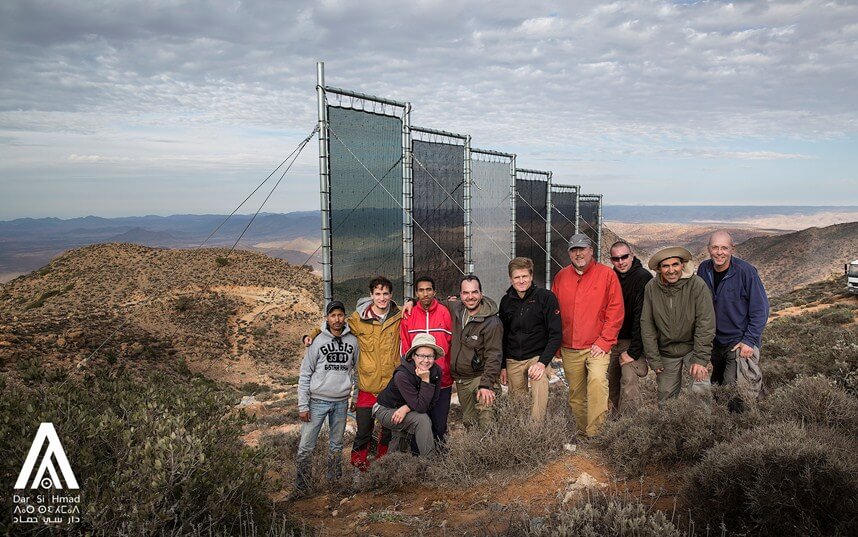Moroccan water nets supporting adaptation and empowering women
This week, Aqualonis’s Cloud Fisher nets that capture drinking water from cloud vapour caught our attention.
Cloud Fisher, which was awarded the UNFCCC Momentum for Change prize in 2016, is a particularly critical technology for drought-stricken areas.
It works by harvesting cloud vapour through a vertically suspended mesh. The mesh’s spidery webs help it form into larger droplets, which collect in troughs along the bottom. Water, stored in tanks, is then piped to local villages.

Image: UNFCCC / Darshimad
Moroccan charity Dar Si Hmad is working with Aqualonis on a major project to install fog nets in some of Morocco’s driest areas. As well as helping manage the effects of drought and providing access to water, the project is empowering women, who often bear a greater burden in coping with the effects of climate change.
With rainfall a fraction of anywhere in Europe, women and girls spend more than three hours a day fetching drinking water for families and livestock, and are often prevented from attending school.
Dar Si Hmad is set to expand the project to 13 villages this year. Cloud Fisher has become a choice for such projects as it is the best-performing fog net to date: 1600 m² of Cloud Fisher nets provides about 15 litres per person per day.
Aqualonis, the Munich-based company behind Cloud Fisher, is also looking to scale up use of the technology across drier parts of Europe, in the Canary Islands, on Spain’s east coast and in Croatia.

